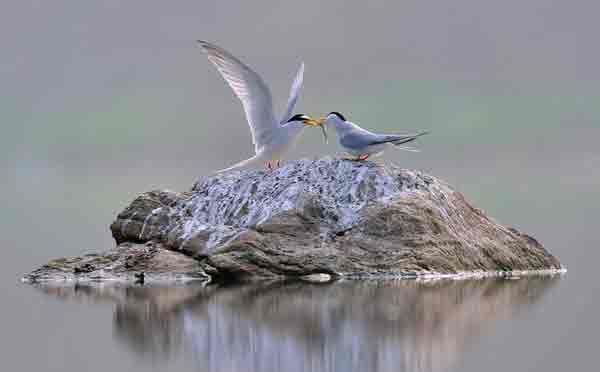

Little terns, black-throated divers are among seabirds that are given greater protection after a stretch of coastline in Cornwall is awarded special status
Cornwall, UK (BBN) - Little terns and black-throated divers are among the seabirds that have been given greater protection after a stretch of coastline in Cornwall was awarded special status to safeguard its wildlife.
The newly designated marine special protected area (SPA), which stretches for 24 miles between Falmouth Bay and St Austell Bay, is home to more than 150,000 rare seabirds, reports The Guardian.
Great northern divers and Eurasian spoonbills are also visitors along with sandwich terns and common terns. All are amber-listed by conservation groups because they have suffered significant losses of numbers and range in the recent past.
The newly designated stretch of land covers an area equivalent to 55,000 football pitches and has been set up to help minimise disturbance to the birds that feed there and who use the Cornish coastal areas as a safe haven during winter. The region is considered to be a bird-watcher’s heaven because rare birds, blown off course during their migration, also make occasional unscheduled stops. These infrequent visitors include the exotic-looking hoopoe, with its long pinkish-brown crest, that every so often gets diverted en route from Africa to northern Europe.
The latest expansion of Britain’s marine special protected areas will make a significant addition to the UK Blue Belt programme, which already protects 23% of UK waters, and which consists of more than 300 sites across land.
Announcing the decision to set up the new protected area, environment minister Thérèse Coffey cited BBC1’s popular environmental series Blue Planet II as a key influence in the ongoing efforts to expand the nation’s Blue Belt. “Like the millions of others watching Blue Planet II, I am only too aware of the importance of protecting our precious marine environment, and the wildlife that relies on healthy and productive seas.”
One of the key reasons for setting up greater wildlife protection for the Falmouth-St Austell coast is to aid the great northern diver, one of the most distinctive winged visitors to our coast. Around 2,500 birds arrive in the UK every winter, with Scotland hosting the largest numbers. However, a small population comes further south to Cornwall, where individuals can be seen elegantly swimming offshore between bouts of diving for fish and shellfish.
In addition to the setting up of the Cornish protected area, a further marine SPA has also been announced in the Irish Sea between the Isle of Man and Anglesey, home to the largest known aggregation of Manx shearwaters. These distinctive birds take their name from their method of flying, in which they take long glides on stiff, straight wings before banking or “shearing” over the water. It is estimated that up to 12,000 Manx shearwaters can be found in the area.
Natural England chairman Andrew Sells said that extending the Blue Belt was a vital measure to protect the UK’s wildlife that would help them “thrive into the future”. “Terns and Manx shearwaters, with their dramatic aerial displays, are a magnificent sight above our seas,” he said.
BBN/MMI/ANS